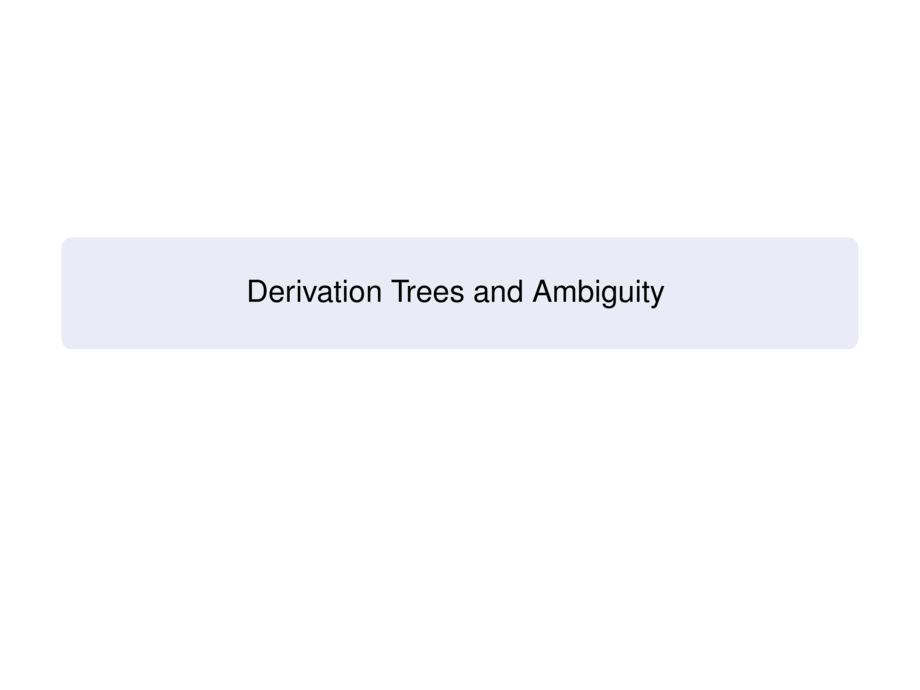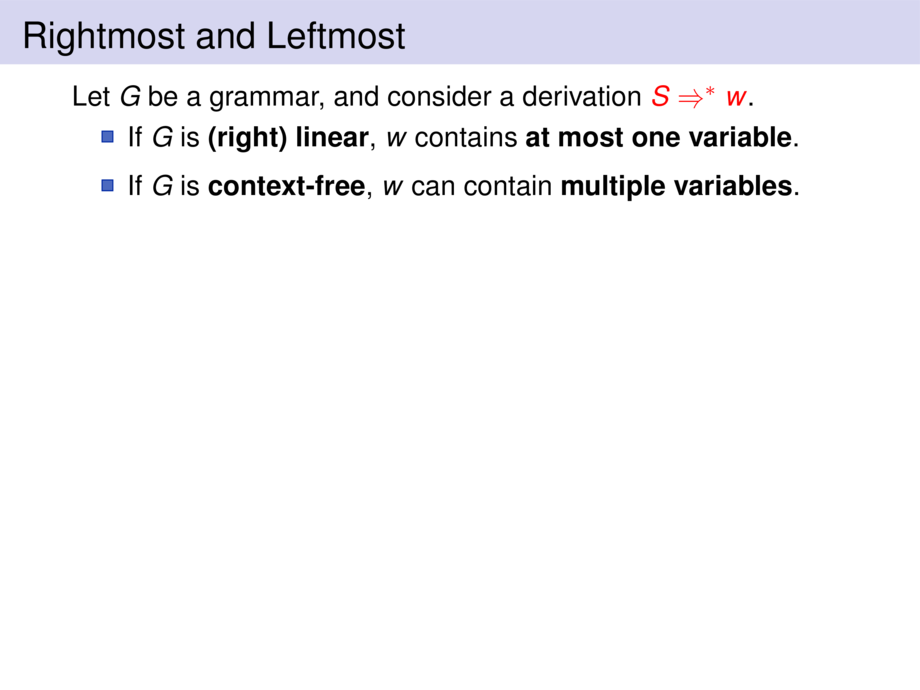



































































































24/49
\begin{frame}{Rightmost and Leftmost}
Let $G$ be a grammar, and consider a derivation \alert{$S\Rightarrow^* w$}.
\smallskip
\begin{itemize}
\item If $G$ is \emph{(right) linear}, $w$ contains \emph{at most one variable}.
\item If $G$ is \emph{context-free}, $w$ can contain \emph{multiple variables}.
\end{itemize}
\pause\smallskip
\begin{block}{}
Two strategies to choose which variable to expand:
\begin{itemize}
\item \emph{leftmost}: always the leftmost variable
\item \emph{rightmost}: always the rightmost variable
\end{itemize}
\end{block}
\begin{exampleblock}{}
\begin{talign}
S \to SaS \mid b
\end{talign}
Two derivations of $bab$:
\smallskip
\begin{tabular}{rl}
\hspace{1cm}\emph{leftmost}: & $S \Rightarrow SaS \Rightarrow baS \Rightarrow bab$\\
\emph{rightmost}: & $S \Rightarrow SaS \Rightarrow Sab \Rightarrow bab$
\end{tabular}
\end{exampleblock}
\pause
\begin{goal}{}
Result depends not on the strategy, but the choice of the rules.
\end{goal}
\vspace{10cm}
\end{frame}

